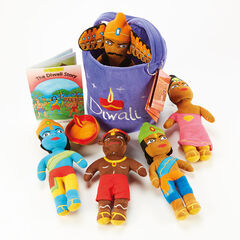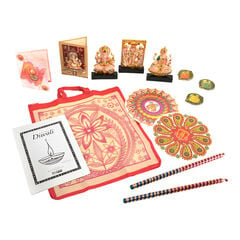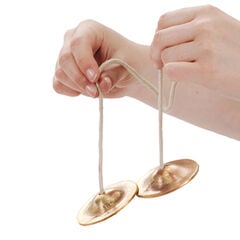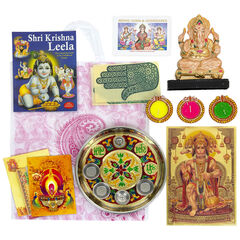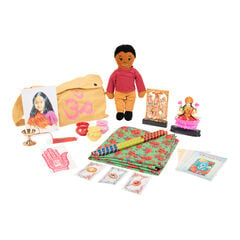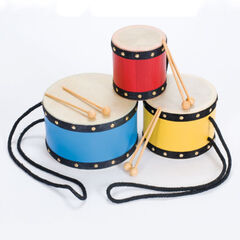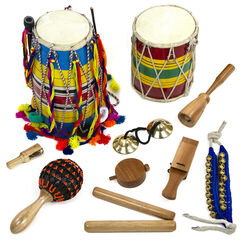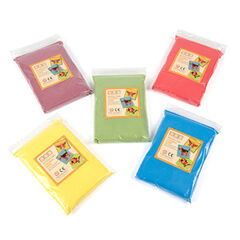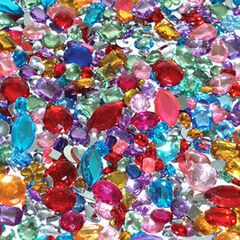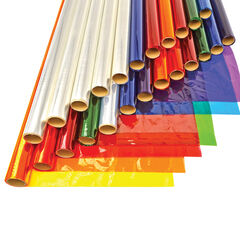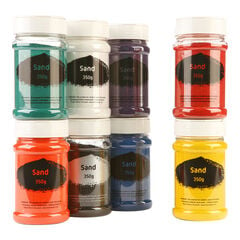Shine a Light: Diwali Activity Ideas

Diwali, known as the festival of lights is celebrated all around the world by millions of Hindus, Sikhs and Jains. Read this blog to find out more about this colourful celebration and to explore creative ideas to try with your children.
What is Diwali?
Diwali is the Hindu festival of lights. The word Diwali means ‘row of lights’. It is a five day festival that celebrates the triumph of light over darkness and good over evil. It represents new beginnings and new life.
When is Diwali?
Diwali takes place on the last two days of the dark half of the Hindu months Ashwin and Kartik (October and November). The date is not the same each year as the Hindu calendar is based on the moon. This year, 2025, Diwali will be celebrated from Monday 20th October and next year (2026) will start on Sunday 8th November.

How do people celebrate Diwali?
People celebrate Diwali by cleaning their houses and then decorating them with lights. Lamps (diyas) will be lit and windows and doors left open to help Lakshmi, the goddess of wealth, find her way into people’s homes to bring good fortune. Families perform religious rituals, known as pujas, to honour deities, including Lakshmi.
Families create Rangoli patterns. They use colourful powders, pastes, rice or flower petals. These beautiful designs are often drawn at the entrance to homes to welcome the gods and ward off evil.
People will exchange gifts and sweets with family and friends. It is a tradition to wear new clothes to signify new beginnings. Families prepare festive meals and enjoy setting off firecrackers and fireworks to celebrate the triumph of good over evil, light over dark.
Read more about Diwali celebrations in the blog by Smita Pant, a teacher from Inspiration School in Uttarakhand, ‘Diwali Celebrations in India’.
Diwali Activities
Below are a selection of Diwali activities suitable for Early Years, KS1 and KS2 that explore the meaning of Diwali, the story of Diwali and how Diwali is celebrated.
The Five Days of Diwali
One way you might like to learn about Diwali is by learning about each day of the festival.
The festival is celebrated over a period of five days, each having a special significance. It’s a time to think about the future, have fun, share food and gifts, as well as remembering the traditions related to the festival. Here is a brief introduction to each of the days with a suggestion to an activity you can use to give each day meaning.
Day 1: Dhanatrayodashi or Dhanteras

Day one: Families will light a diva lamp and position it so that the single flame points to the south. People clean and decorate their homes with lights. You could make a diya lamp using air dry clay and decorate it with water-based paint. Use foil or a tealight to make a flame. You can bring science learning in with circuits and bulbs.
Day 2: Narak Chaturdashi
Day 2: Families share food and eat traditional sweets. In the evening people will watch fireworks as well as illuminating their homes with lights and diva lamps. You could make some tasty Milk Barfi (thanks to Anjula Wilson for sharing this recipe)
Create colourful wax resist firework pictures using a wash of watered down ready mix black paint over your wax crayon firework designs. The wax will repel the paint with your night sky patterns revealed.
Day 3: Lakshmi Pujan

Day 3: People celebrate in worship of the goddess Lakshmi. They welcome the goddess with Rangoli patterns at the entrance of homes. Make Rangoli patterns using chalk, flour and rice. The rice may be coloured using food colouring. Flower petals can also be added. Create beautiful colourful Rangoli patterns to decorate indoor and outdoor areas.
Day 4: New Year

Day 4: Today Is about hope and possibilities for the future. To celebrate people wear new clothes and exchange gifts. Families and friends often send each other greeting cards and wish each other ‘Saal Mubarak’ which means Happy New Year. You could make handmade cards using popular images such as diva lamps, Rama and Sita, Rangoli patterns, traditional food and the lotus flower.
Day 5: Sister’s Day
Day 5: The celebration continues on the fifth day as sisters cook their brothers their favourite meals. It is also tradition to place a red dot on their brother’s forehead. This is called a tilak and is meant to be lucky. As a thank you, brothers may give their sisters a present.
Learn About the Story of Rama and Sita
A central story of Diwali is the story of Rama and Sita, celebrating Prince Rama’s return home after rescuing his wife Sita from the demon king Ravana. Rows of lights guided them back to their kingdom.
- Share the traditional story of Rama and Sita, which is about good winning over evil.
- Use the basket of characters to act out the events or try making your own Rama and Sita characters, designing and making puppets or masks.
- Use dance and drama to retell the story.
- Play festive music using Indian percussion instruments such as the Tom Tom drums and Bell Cymbals.
- Learn and enjoy singing Diwali songs.
Diwali Arts and Crafts
Diwali is a festival full of colour, decorations and patterns and there are lots of arts and crafts you can enjoy as part of this celebration.
Explore our dedicated Diwali Arts and Crafts blog for step-by-step instructions for eight creative Diwali activities. These are:
- Handmade Folded Paper Diya Garland
- Hanging Tealight Diwali Card Decorations
- Painted Diwali Paper Diya Decorations
- Paper Diya Tealight Table Decorations
- Rangoli Stained Glass Effect Light Catchers
- Diwali Window/Tealight Card Decorations
- Diwali Light Up Wall Hanging Flower Decorations
- Decorative Rangoli Patterns and Suncatchers
Click here for Diwali Arts and Crafts
Diwali Cooking
A large part of the celebrations centre around food and sharing.
- Research some traditional Diwali recipes and try creating these in the classroom.
- Create a Diwali recipe book and enjoy a special feast of savoury and sweet delights.
Other Diwali Activities
- Make a Diwali fact file or PowerPoint Presentation to teach others about Diwali. Find some interesting facts to share about the celebration.
- Invite guest speakers in to share their personal experiences and traditions.
- Decorate the room and use glow resources to celebrate the magic of light.
HAPPY DIWALI
Click here for more Diwali resources
Blog written by Rachel Betteridge.
Rachel is a Content Editor for TTS. She is a qualified Primary School Teacher with 26 valuable years of experience, teaching from Early Years to year 6.

















